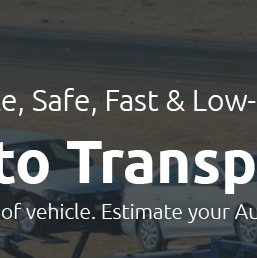 |
|
||||
 |
 |
 |
 |
||
 |
 |
|||||
 |
 |
 |
 |
 |
 |
 |
||
 |
 |
 |
 |
 |
 |
 |
 |
 |
 |
 |
|
 |
Ship Transporting Cars: An Insight into Maritime Vehicle LogisticsTransporting cars via ships is an integral part of the global automotive supply chain. It involves the movement of vehicles across vast oceans, connecting manufacturers with international markets. This article explores the intricacies of ship transporting cars, detailing how this complex process ensures the safe and efficient delivery of vehicles worldwide. The Process of Ship Transporting CarsShip transporting cars is a well-coordinated process that requires meticulous planning and execution. It begins with the careful loading of vehicles onto specially designed ships, known as car carriers or Roll-on/Roll-off (RoRo) ships. Loading and Securing VehiclesThe loading process involves driving the vehicles onto the ship, where they are securely fastened to prevent movement during transit. This is crucial for ensuring the safety of the vehicles and the ship's stability. Navigating the SeasOnce the vehicles are loaded, the ship embarks on its journey across the sea. These ships are equipped with advanced navigation and communication systems, ensuring safe passage to their destination ports.
Advantages of Ship Transporting CarsTransporting cars by sea offers several benefits, making it a preferred choice for many manufacturers and distributors.
For more detailed insights, you can explore the best vehicle transport companies that specialize in maritime logistics. Challenges in Ship Transporting CarsDespite its advantages, ship transporting cars also faces several challenges that need to be addressed to ensure smooth operations. Weather ConditionsAdverse weather can pose significant risks to ships and the vehicles they carry. High seas and storms require careful navigation and sometimes rerouting. Port CongestionBusy ports can lead to delays in unloading vehicles, impacting delivery schedules. Efficient port management and scheduling are essential to mitigate this issue. For those seeking efficient solutions, understanding car transport kansas city ks options might provide valuable insights into overcoming such logistical challenges. FAQs on Ship Transporting CarsHow are cars protected during sea transport?Cars are secured using a series of straps and braces to prevent movement. Additionally, RoRo ships are designed to provide a stable environment, minimizing the risk of damage. What is the average time for a car to be shipped across the ocean?The time can vary based on the route and distance. Typically, it takes between 10 to 30 days for a car to be shipped from one continent to another. Can personal belongings be shipped inside a car?Most shipping companies advise against it due to safety and insurance regulations. Personal belongings are not covered by the shipping insurance and may pose a risk if not properly secured. https://www.shiply.com/us/car-shipping?srsltid=AfmBOoqz4YoW0XIuXQspo2tvoo5mRwFyAPAm03jmnr9MDxDOcetBW1j5
A service carried out by car shipping companies that will pick your car up from one place and move it to another. https://ship.cars/
Ship.Cars offers an end-to-end platform for shippers and carriers. Learn how our software solutions can grow your car hauling company and increase profits. https://shipacardirect.com/?srsltid=AfmBOooXTv57qMrOiy4KRWBY405yAhxGwd1nw-0HsiwvYDGxH1Isu3-H
We're America's #1 Company to Ship a Car Across Country. Damage Free Guarantee* or we help pay! Door to Door Auto Transport Service. 100% Insured. Licensed and ...
|
